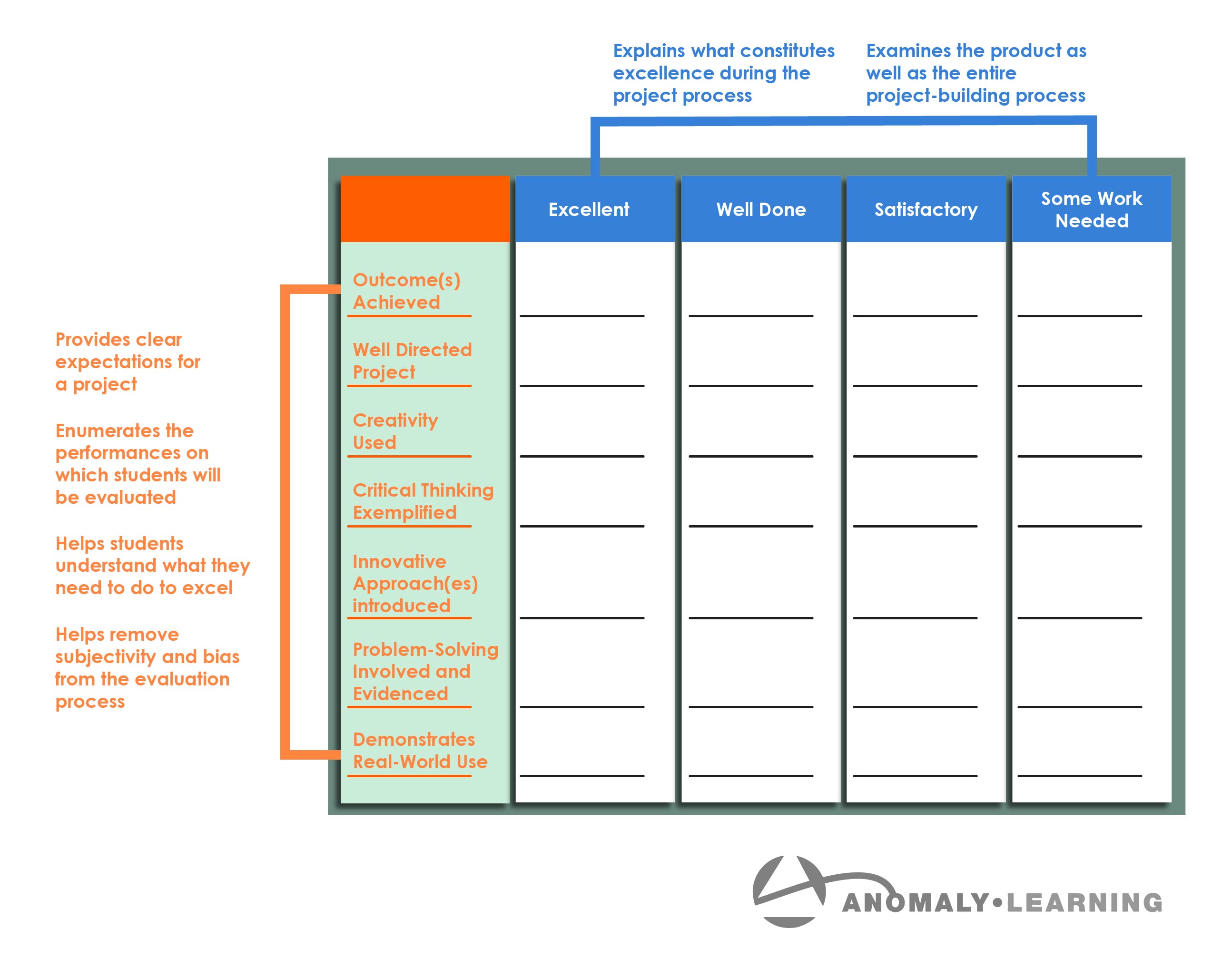Rubrics should be customized for each project and designed to support the end goal or product. A rubric helps you, as a teacher, to scope out the width and breadth of the project work and helps students understand the areas of value being assessed. All of this guides the student more clearly and provides a more efficient way of assessment for the teacher.
Creative Educator suggests:
A rubric is an authentic assessment tool that:
So, the end in mind or the outcome is the place to start, then include the various skills and activities important for students to complete in relation to the subject area you're teaching and the standards in place. We also suggest, however, that you include some of the new and newer skills required for students to be prepared for their future. This means that students will begin intentionally working on some of those such as: Problem solving, critical thinking, innovation, and real application. Here's an example:
TIP: Add in specific outcome-specific aspects and activities/skills etc. Also, each of those in the grid above can be described according to the grade level and subject area, however, this amount of scope should be included to fully assess the work completed. TIP: Add in specific outcome-specific aspects and activities/skills etc. Also, each of those in the grid above can be described according to the grade level and subject area, however, this amount of scope should be included to fully assess the work completed.
Coming up, “Some subjects concern only facts, not projects or problems!" Stay tuned...